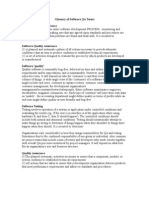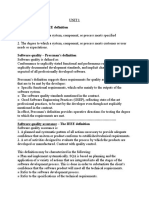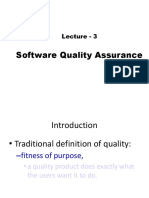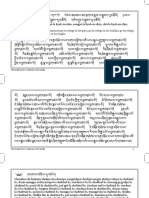0% found this document useful (0 votes)
17 views17 pagesSoftware Engineering Unit 4-8
The document discusses Software Quality Assurance (SQA), defining quality in terms of design and conformance, and emphasizing the importance of quality control and assurance in software development. It outlines SQA activities, the distinction between quality assurance and quality control, and the role of software configuration management in handling changes during development. Additionally, it covers software design principles, testing methodologies, and the necessity of rigorous testing to ensure software reliability and effectiveness.
Uploaded by
naveenddiveCopyright
© © All Rights Reserved
We take content rights seriously. If you suspect this is your content, claim it here.
Available Formats
Download as PDF, TXT or read online on Scribd
0% found this document useful (0 votes)
17 views17 pagesSoftware Engineering Unit 4-8
The document discusses Software Quality Assurance (SQA), defining quality in terms of design and conformance, and emphasizing the importance of quality control and assurance in software development. It outlines SQA activities, the distinction between quality assurance and quality control, and the role of software configuration management in handling changes during development. Additionally, it covers software design principles, testing methodologies, and the necessity of rigorous testing to ensure software reliability and effectiveness.
Uploaded by
naveenddiveCopyright
© © All Rights Reserved
We take content rights seriously. If you suspect this is your content, claim it here.
Available Formats
Download as PDF, TXT or read online on Scribd
/ 17
























































































